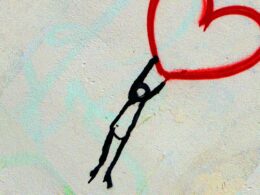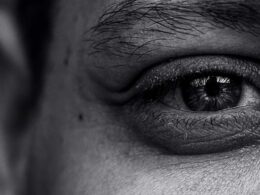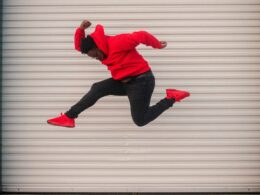Recently an industry magazine published an article about brand loyalty, or more accurately, about the lack of brand loyalty among consumers. The writer expressed the opinion that, aside from fixated fans, there’s no such thing as real brand loyalty.
That caught my attention because, well, I’ve spent the better part of my professional career measuring brand loyalty and am, modestly speaking, considered something of an expert as regards it. So, in the face of a brand loyalty-denier, I’m confident saying, “Brand loyalty does exist.” In fact, this week we’re releasing our 24th annual Loyalty Leaders List, but I’ll come back to that in a moment.
It turns out that brand loyalty not only exists, but is a measurable, leading-indicator of brand profitability. Our loyalty assessments correlate highly with actual, in-market, positive consumer behavior toward a brand, i.e., brand loyalty. The levels of correlation we see between our assessments and brand purchases, fall into the 0.80 to 0.901 range, which, I feel compelled to point out to the intrepid reporter, is really, really high, and more than just happenstance. It’s the result of – you guessed it – brand loyalty!
I haven’t mentioned the name of the magazine or the reporter’s byline because the quality of mercy is not strained, even in the research industry! Suffice to say it is reasonable to presume this particular reporter has neither a deep background in brand research nor a real grounding in loyalty, although I suspect the writer is likely a member of multiple point-programs in multiple categories. Point systems give the appearance of loyalty, but, alas, today they are just category table stakes and part of the deal consumers expect.
I also believe the reporter fell – or was led into – the massive intellectual gap between what is known and what is still practiced. So, let’s get a few things straight.
Brand loyalty today is vastly different than brand loyalty of the last century. When many big consulting firms and university marketing departments use statistically reliable, yet loyalty-dyslexic systems to simply count things, they end up collecting what people say, but miss what people really think, and ultimately what they will do. When you’re talking about measuring real brand loyalty, you’re talking about something complex. Something emotionally-based. Counting just doesn’t cut it.
For example, if you noted customers bought the same thing, the behavioral data would look the same on the basis of those generally accurate counts. But relying on that as your loyalty test is not only misleading but is extraordinarily lazy. Indeed, purchase data alone does not distinguish between loyalty and impulse buying, and while useful, doesn’t allow you to back into a measure of brand loyalty. The inverse, however, is true. If you measure brands first to determine loyalty levels, those metrics can reveal the difference between a loyal and casual customer.
Real brand loyalty assessments measure the emotional engagement between the consumer and brand versus the consumer’s category Ideal. Those engagement levels identify differences between brand loyal customers and casual customers. Or someone buying out of absolute necessity. Think of it as a continuum consumers fall on between obsession and indifference. Yes, it varies from category-to-category, but you have to measure the brand first to understand where a customer falls as regards loyalty.
Just in case none of you have been sheltering-in or suffering shortages of things normally available to you, the reporter pointed out that during the pandemic product shortages resulted in people buying whatever was available. One consulting firm source said a third of customers they interviewed tried new brands during the pandemic. Does that surprise you? You couldn’t get Charmin, so you bought another toilet paper! Does that dumbfound you? Nah, me neither.
The reporter did not think to point out that there is (or should be) a distinction between outright need and brand loyalty – only that they bought another brand, so QED, brand loyalty doesn’t exist.
Three percent (3%) of that same group apparently also said the new brands would have standing in future purchase decisions. Well, asked and answered. Except as far back as 1990 researchers knew “purchase intent” was notoriously over-stated in survey responses. (Extreme need and pandemics notwithstanding, what the consulting firm proved – and what the reporter described – was the efficacy of mid-1980 satisfaction and ISO-9000 total-quality movements, which ultimately made primacy-of-product the rule rather than the exception. So, there was pretty much no downside to buying off-brand toilet paper when, say, Charmin wasn’t available, until it was, and consumers went back to buying it and not the “new brands.” So much for having standing in the purchase decision. Just saying.)
So, yes, brand loyalty exists, and we’ve released our 2020 Loyalty Leaders List, a cross-category examination of 1,121 brands in 109 categories, which identifies the top 100 brands. The analysis is a combination of higher-order statistical analyses marketing professors live for, and psychological research consulting firms completely ignore because they make their money counting things. And yes, being in-stock matters as regards sales figures, but loyal customers are six times more likely to stick with brands through difficult times like these, and they did.
And sure, desperate times calls for desperate choices. But that’s due to lack of choice or availability, not the non-existence of brand loyalty. During pandemics consumers will compromise, but they still continue to demand their expectations be met – or met as well as the available brands can. Under any circumstances, the brands that best meet consumers’ mostly-emotional expectations, always see loyalty. The ones that don’t may benefit from short-term, desperation-buying, but it’s called “short term” for a reason.
As you might imagine, COVID-19 fueled a lot of brand loyalty movement up and down this year’s Loyalty Leaders List. The top 10 brands ranked as follows, with numbers in parentheses indicating where consumers ranked them last year:
- Amazon: online retail (#1)
- Netflix: video streaming (#6)
- Amazon: video streaming (#7)
- Apple: smartphones (#8)
- Domino’s: pizza (#15)
- Google: search engines (#2)
- Disney+: video streaming (new)
- Home Depot: Home improvement retail (#37)
- WhatsApp: instant messaging (#12)
- Samsung: smartphones (#3)
By the way, I did write to the editor of the afore-mentioned magazine offering to provide them with a 21st century perspective of brand loyalty and an advance peek at these ratings. I’m still waiting for a reply.
If the reporter had checked these assessments, they would have found the brands with highest loyalty ratings also turn out to be the ones that have the biggest category shares-of market and the best bottom-lines. That’s not happenstance, it’s customers being loyal to the brands. Like I said at the outset, “Brand loyalty does exist!”
So, if you come away from this column thinking that I feel the loyalty-denying reporter is a gullible and gormless dilettante who picked up their knowledge of brand loyalty from watching a few videotaped episodes of Scooby-Doo, for legal reasons I have to point out that isn’t true.
 Robert Passikoff is founder and CEO of Brand Keys. He has received several awards for market research innovation including the prestigious Gold Ogilvy Award and is the author of 3 marketing and branding books including the best-seller, Predicting Market Success. Robert is also a frequent contributor to TheCustomer.
Robert Passikoff is founder and CEO of Brand Keys. He has received several awards for market research innovation including the prestigious Gold Ogilvy Award and is the author of 3 marketing and branding books including the best-seller, Predicting Market Success. Robert is also a frequent contributor to TheCustomer.













2 comments